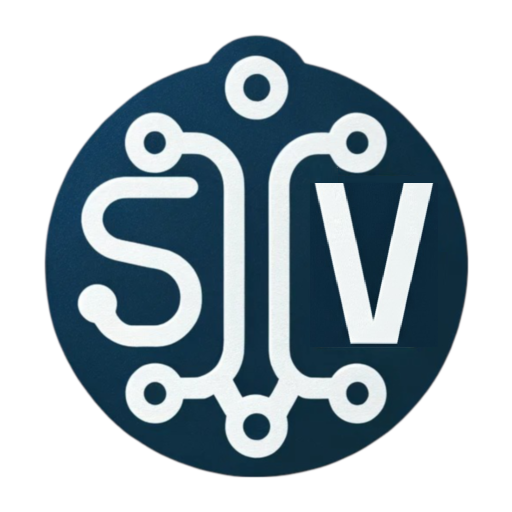
User Favorites
Disclosure for Our Readers
This blog contains affiliate links. If you make a purchase through one of these links, our team may earn a commission at no extra cost to you. Learn more. Thanks for your support!
I remember the early days of customer support tools. It was a chaotic mess of shared email inboxes, spreadsheets, and sticky notes. A customer’s history was scattered everywhere.
But one name came up constantly: Zendesk. It’s the enterprise-grade giant in the customer service platform space. The name itself is synonymous with support.
But the reverence for Zendesk is often matched by frustration. I’ve seen threads about its high cost and complexity. So, is it still the default best choice?
This in-depth review will dissect the platform. We’ll explore its powerful tools, its frustrating drawbacks, and who should actually be paying its premium price tag.
What is Zendesk, Really?
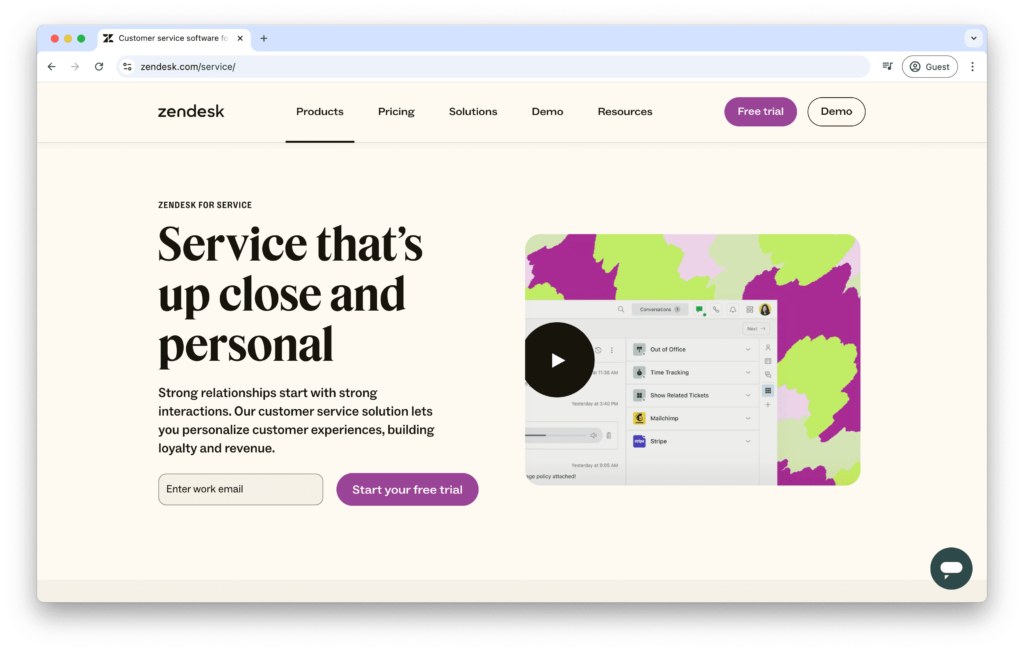
Zendesk is far more than just a tool for answering emails. It’s a comprehensive, omnichannel suite designed to manage all customer interactions in one unified place.
It started as a simple ticketing system. Now, it has evolved to include a knowledge base, live chat, voice calls, and even a sales CRM. It aims to be a single source of truth.
The core idea is to streamline your support workflow. This helps your team provide faster, more consistent, and more personalized service to every single customer.
A Deep Dive into Zendesk’s Core Products
The Zendesk Suite is a bundle of powerful, interconnected tools. Understanding each component is key to knowing if the whole package is right for you.
1. The Heart of the Operation: Zendesk Support
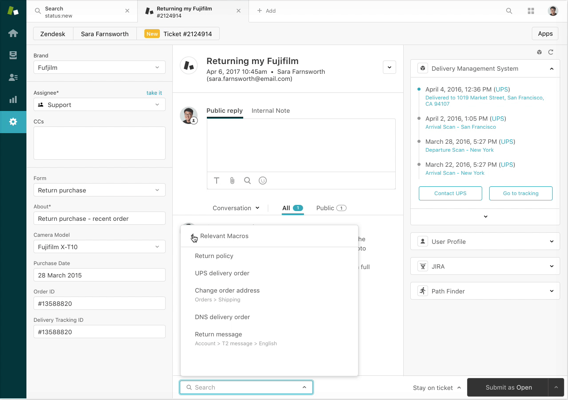
(Source)
This is the foundational ticketing system. It centralizes all customer conversations from any channel. This includes email, social media, web forms, and phone calls.
Agents work from a single, unified interface. They can use macros (canned responses) and triggers to automate repetitive tasks. This drastically improves team efficiency.
Service Level Agreements (SLAs) can be set to prioritize tickets. This ensures your most urgent customer issues always get the attention they deserve first.
2. Empowering Customers with Zendesk Guide
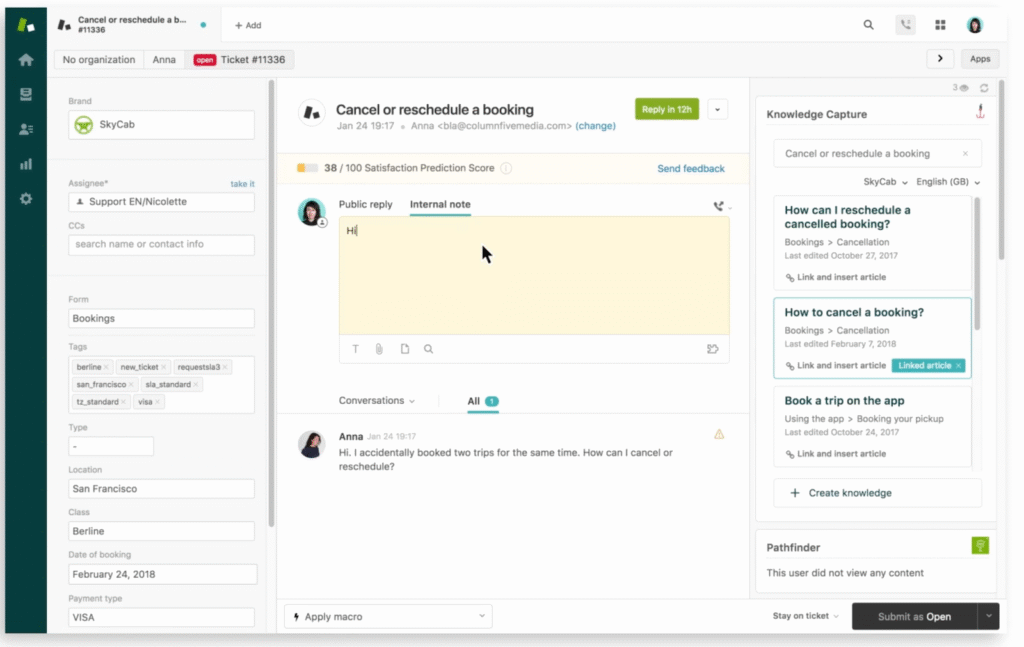
(Source)
Zendesk Guide is its knowledge base software. This is where you build a self-service help center for your customers. It’s a critical tool for reducing ticket volume.
You can create articles, FAQs, and community forums. Customers can find answers on their own, 24/7, without ever needing to contact an agent.
The AI-powered Answer Bot can even suggest relevant articles to customers in chat. This deflects simple questions before they ever become a support ticket.
3. Real-Time Engagement with Zendesk Chat
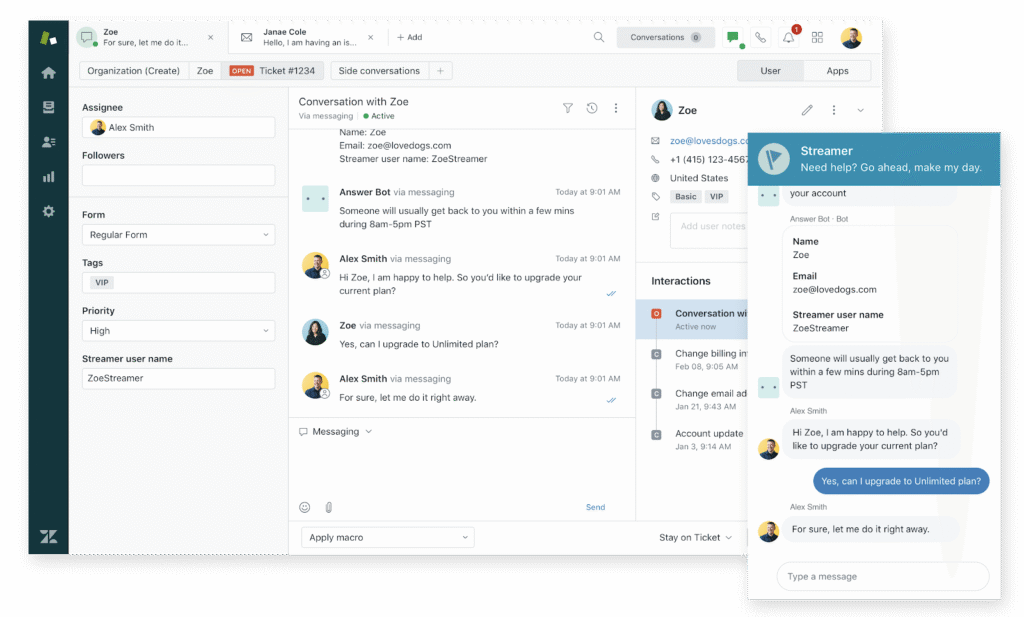
(Source)
This is Zendesk’s live chat software. It allows you to offer instant support to customers and website visitors. It’s perfect for sales questions and urgent issues.
You can create proactive chat triggers. For example, a chat window can pop up on your pricing page after a visitor has been there for 60 seconds.
The system also includes modern messaging capabilities. It supports conversations over popular apps like WhatsApp and Facebook Messenger, meeting customers where they are.
4. Measuring Success with Zendesk Explore
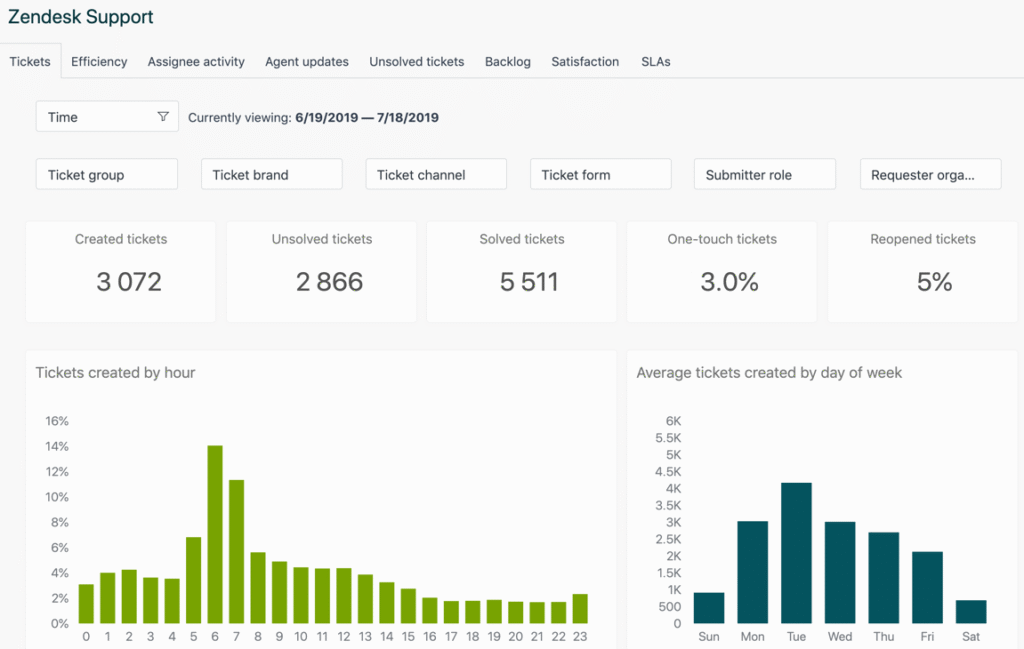
(Source)
Zendesk Explore is the analytics and reporting engine. It provides the data you need to measure your team’s performance and understand customer satisfaction.
It comes with pre-built dashboards for key metrics. This includes first-response time, ticket resolution time, and customer satisfaction (CSAT) scores. You can also build custom reports.
This data is crucial for identifying trends. You can see your busiest times, most common issues, and top-performing agents to make smarter business decisions.
The Zendesk Pricing Maze
Let’s address the elephant in the room: Zendesk’s pricing. It is powerful, but it comes at a premium. The per-agent cost can add up very quickly as your team grows.
Zendesk Suite Plans
| Plan Name | Best For | Key Feature |
| Suite Team | Small Teams | Foundational ticketing & chat |
| Suite Growth | Growing Businesses | AI-powered knowledge base |
| Suite Professional | Scaling Companies | Advanced reporting & SLAs |
It’s crucial to budget carefully. Many of the most powerful features, especially around AI and advanced analytics, are locked behind the more expensive tiers.
The Pros and Cons: A Balanced View
No software is a perfect fit for everyone. Based on extensive user reviews and our analysis, here is where Zendesk excels and where it causes frustration.
What We Love About Zendesk
- Truly Omnichannel: It provides a seamless, unified view of the customer across every channel. This is its greatest strength.
- Highly Scalable: The platform is built to grow with you, from a small startup to a massive enterprise.
- Powerful Automation: The trigger and automation engine can handle complex workflows, saving your team countless hours.
- Robust Integrations: It has a massive marketplace with over 1,000 apps to connect to your existing tech stack.
Where Zendesk Falls Short
- Expensive and Complex Pricing: It is one of the priciest options, and the per-agent model can be punishing for large teams.
- Steep Learning Curve: Getting the most out of Zendesk requires significant setup and ongoing training. It is not plug-and-play.
- Inconsistent Customer Support: Ironically, many users report that Zendesk’s own customer support can be slow and unhelpful.
- AI Can Be Costly: The most advanced AI features are often expensive add-ons or locked in the highest tiers.
Top Zendesk Alternatives
If Zendesk’s price or complexity is a deal-breaker, the market is full of strong competitors that might be a better fit for your needs.
How Competitors Stack Up
| Competitor | Known For | Ideal User |
| Freshdesk | Great value for money | SMBs needing robust features |
| HubSpot Service Hub | CRM integration | Businesses using HubSpot’s ecosystem |
| Intercom | Proactive engagement | Sales-focused support teams |
The Final Verdict: Is Zendesk Worth the Investment?
After this deep analysis, the verdict on Zendesk is clear: it’s an incredibly powerful platform, but its power comes with a significant cost in both money and complexity.
You should invest in Zendesk if:
- You are a mid-sized or enterprise company with a dedicated budget.
- You need a true omnichannel solution to manage complex support channels.
- You have the resources to properly configure and manage the platform.
- Scalability is your absolute top priority for future growth.
You should probably look elsewhere if:
- You are an early-stage startup or small business on a tight budget.
- You need a simple, easy-to-use tool that works out of the box.
- Your support is primarily handled through one or two channels (e.g., just email).
- You prioritize having access to quick and responsive phone support.
Zendesk is a professional-grade tool for professional-grade support teams. If that’s you, it remains one of the best choices available. But for many smaller businesses, its power might be more than you need, and its price more than you can afford.
